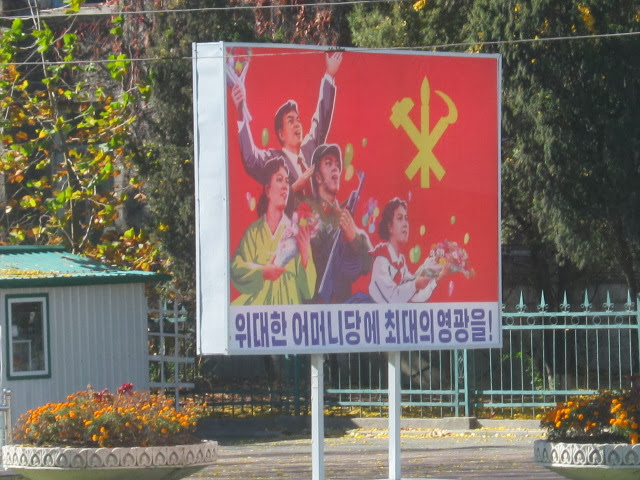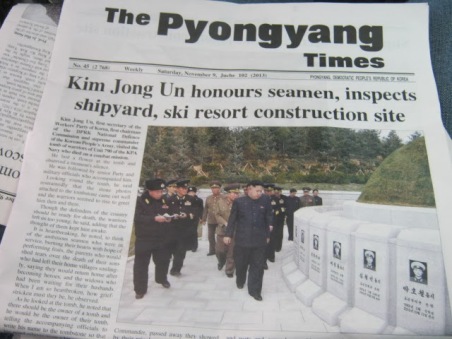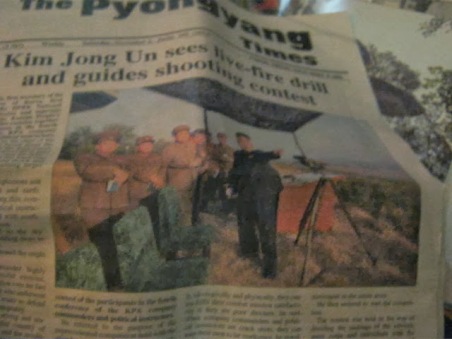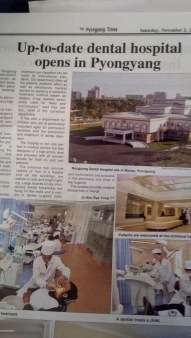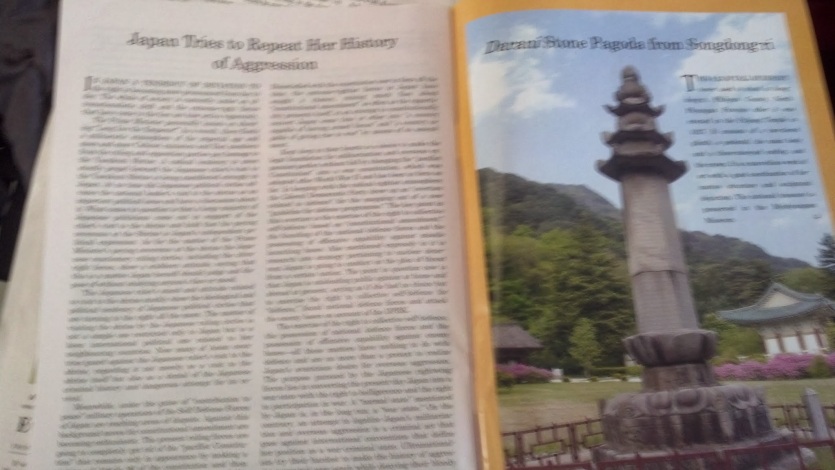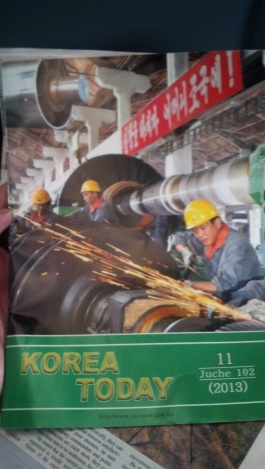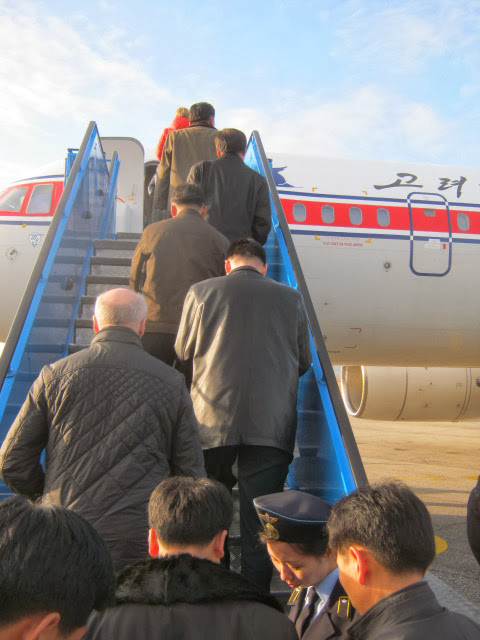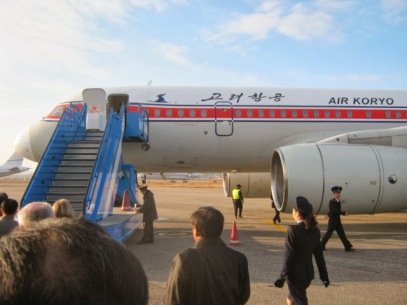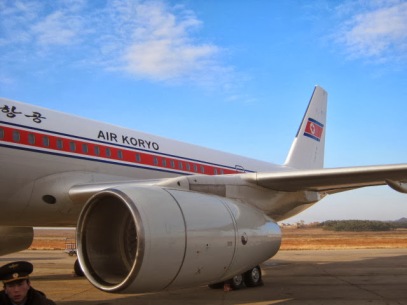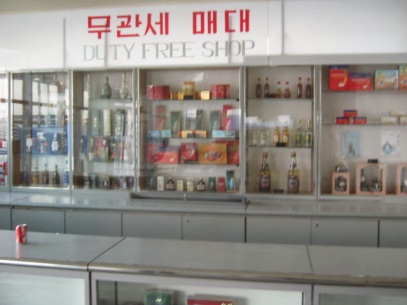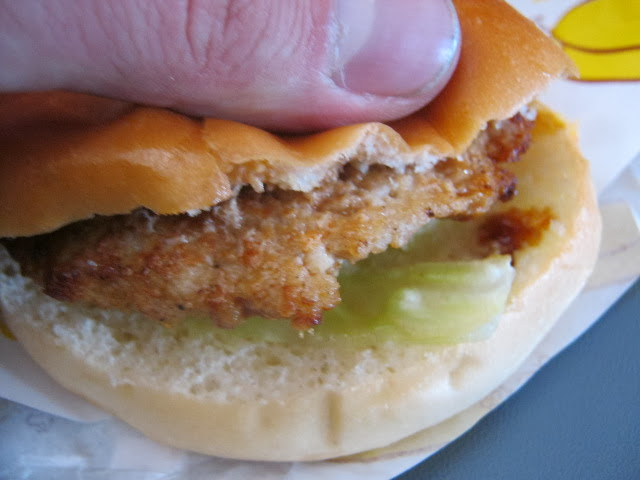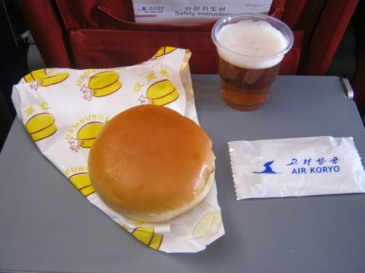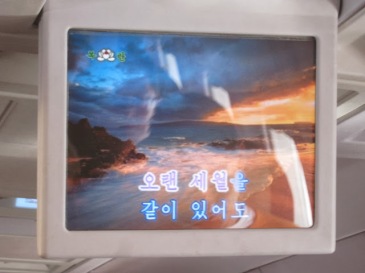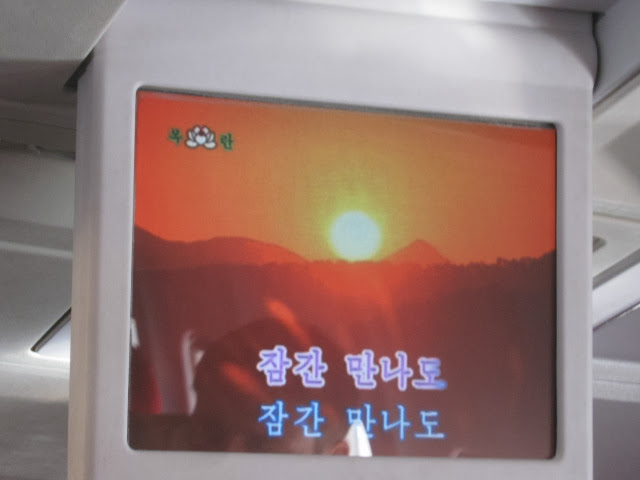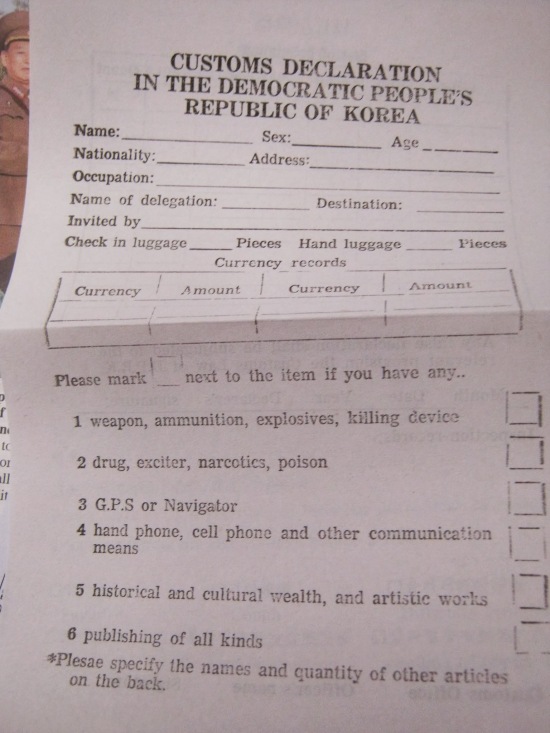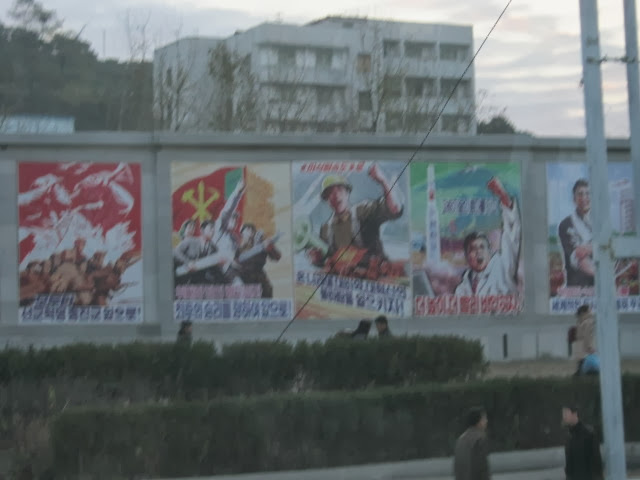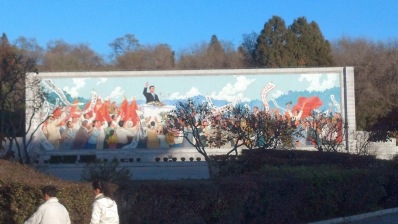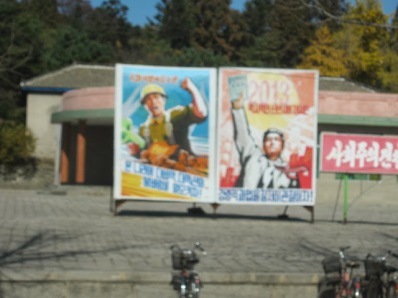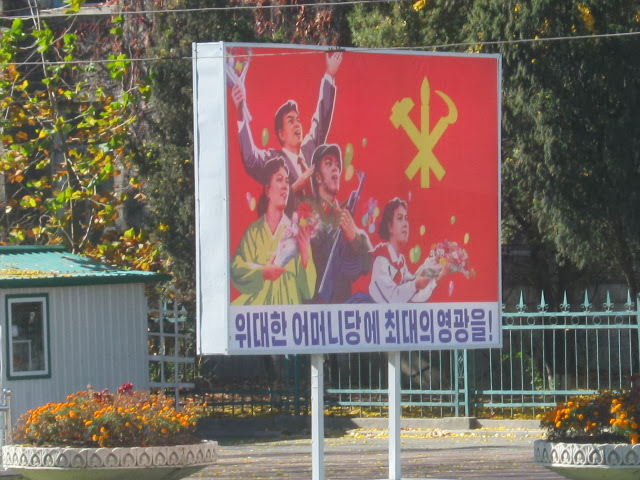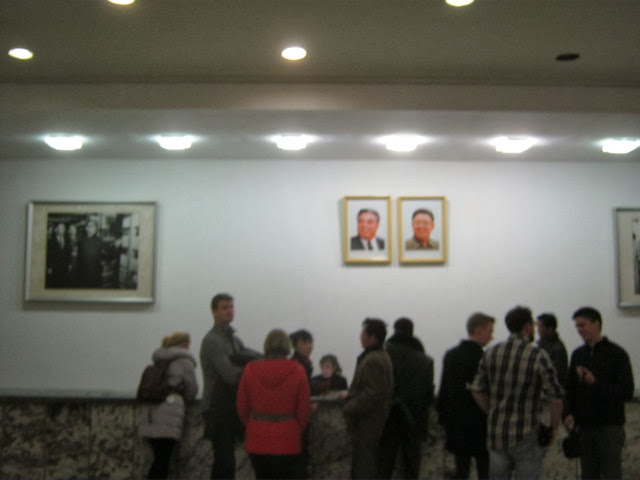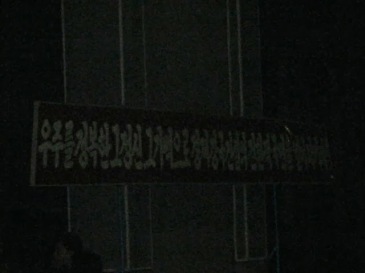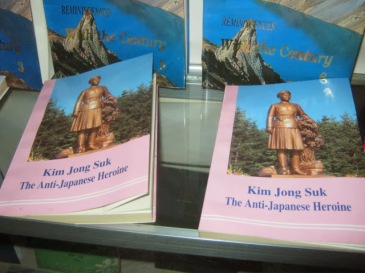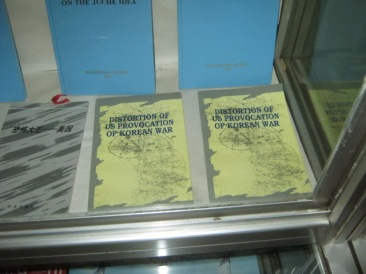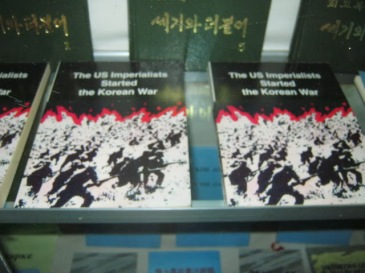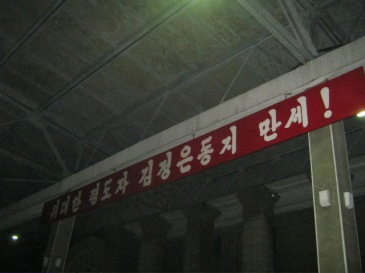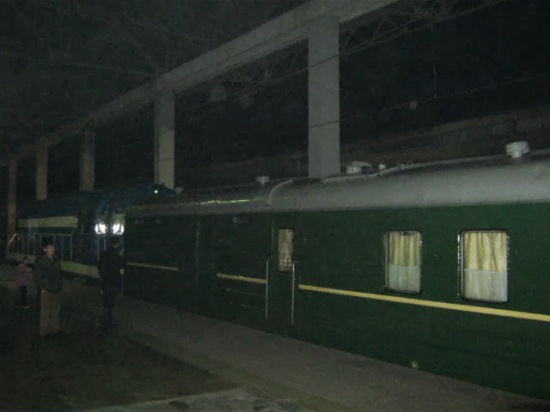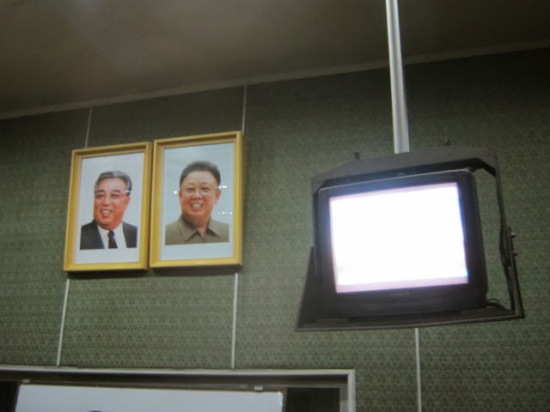The following is the first in a multi-part series chronicling a trip I took to the Democratic People’s Republic of Korea (North Korea) in 2013. For questions about planning a trip there, please refer to this post.
Pre-Flight
I arrived at Beijing Capital Airport at 10:45am for a 12:55pm flight. The people waiting at ticket desk were a mix of foreigners/tourists and (presumably) North Koreans. When I saw “Pyongyang” on the departure screen, it started to hit me a little bit that I’m actually doing this. The ticket desk was unbelievably slow. The flight was also incorrectly listed as being at 12pm. Finally we got our boarding passes (sadly, they are printed on Air China paper – I’m assuming this wasn’t a result a of a codeshare, but rather Air Koryo not being able to afford their own paper or something.
When at the ticket desk, we noticed that our flight was “JS 152” – we all thought it’s kind of odd that an airline called Air Koryo would use “JS” as their airline code. Upon arriving, we find out that it stood for “JoSeon”, a reference to the famous dynasty that ruled Korea for over 500 years, and also used to express hope that Korea would one day be reunited (this was a BIG theme throughout the trip). Note that the logo for Air Koryo is a bird whose wing is in the shape of (North and South) Korea. To this day, I (or the rest of the internet) still cannot figure out why the airport code for Pyongyang is “FNJ.”
When I got to the gate, I noticed several well-dressed Asian businessmen – all wearing red pins with the faces of Kim Il Sung and Kim Jong Il (though some only had Kim Il Sung; I’m guessing new ones were reissued after the death of Kim Jong Il). At this point it’s really starting to hit me. Upon closer review of my tourist visa, I also noticed that for my arrival and departure dates, they put the year as “102”, rather than 2013. Then I remembered that they measure years by the birth of Kim Il Sung (in 1912).
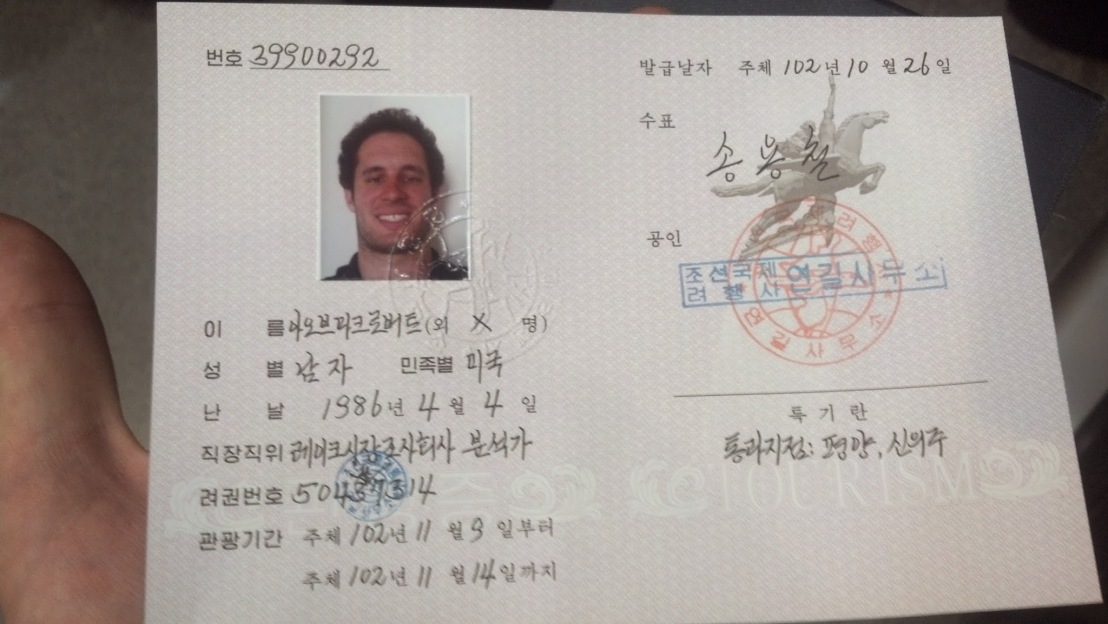
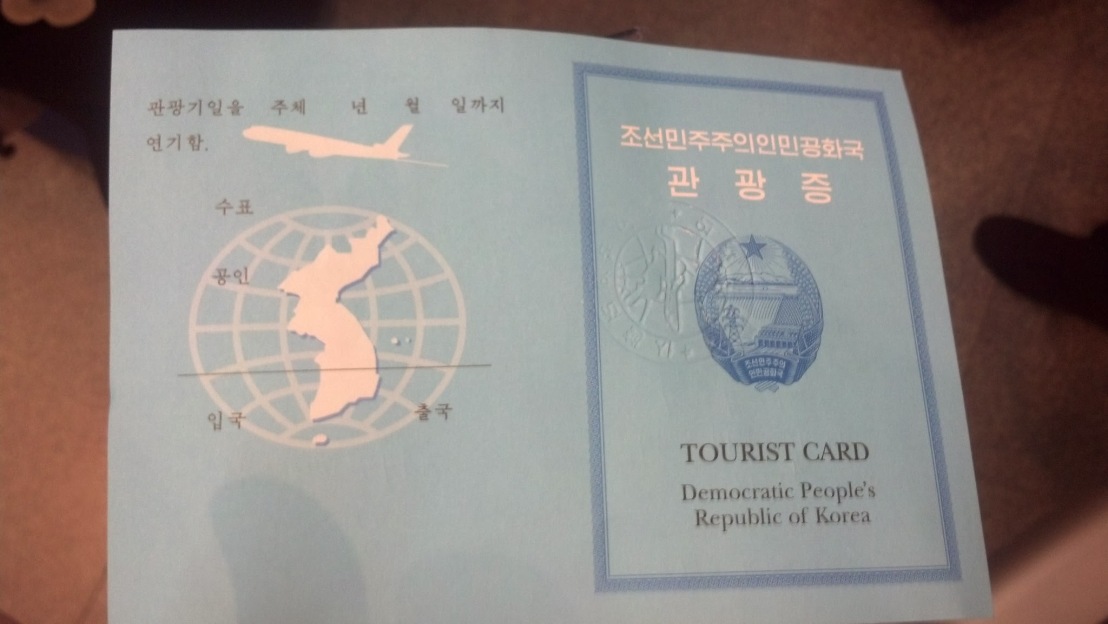
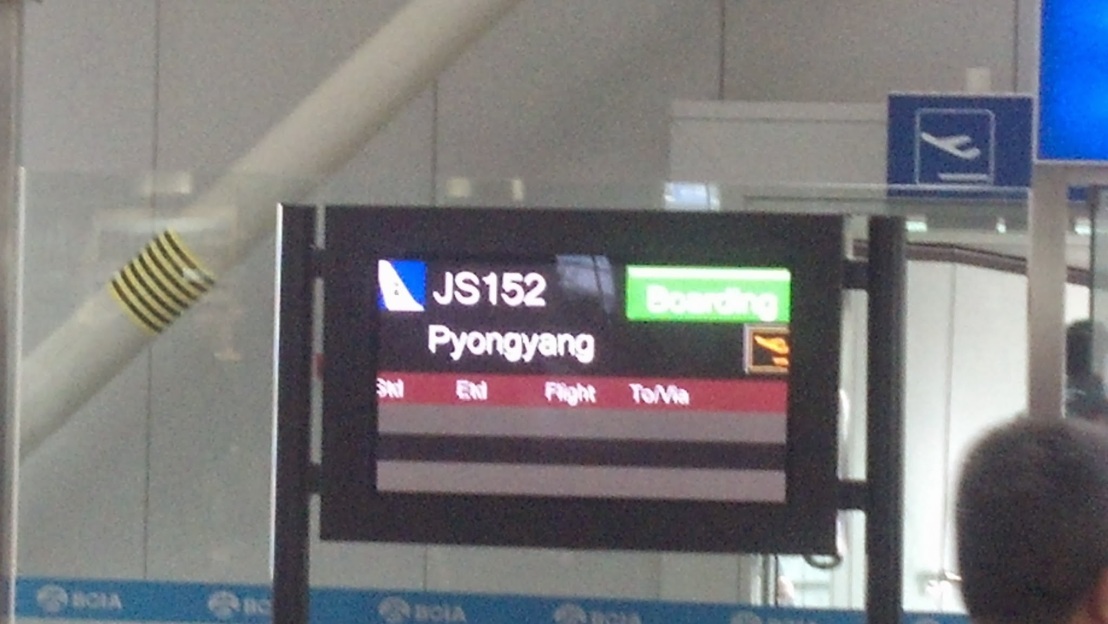
Boarding the plane
We boarded the plane (late, of course), and there were a bunch of North Korean publications on a display rack outside the plane – the Pyongyang Times (an English-language weekly propaganda newspaper), an all-Korean daily newspaper, and then a monthly propaganda magazine published in English and in Korean. I grabbed one of everything. The Pyongyang Times had a picture of Kim Jong Il on the front telling me about all of his great achievements, all the great stuff opening up in Pyongyang, all sorts of anti-US, anti-Japan, and anti-South Korean articles, etc. The monthly magazine had more in-depth features, yet was still blatantly propaganda.
Air Koryo, the state-owned airline, has been rated as the worst airline in the world. It was pretty bad, though I wouldn’t say absolutely awful. That being said, their planes are old planes which the Soviet Union used to use. Needless to say, I was pretty scared when we were taking off, given the inordinate amount of rumbling I heard below me. As soon as we got on the airplane, soft patriotic music started playing, and it continued throughout the entire flight, with accompanying videos. Food consisted of cold hamburgers (imagine a McDonalds burger (not the Big Mac, just a plain burger) made of pork instead, and left sitting out for five hours). It was inedible. Yet all of the North Koreans around me finished the whole thing. Were they just super hungry? The beer they served though was quite excellent – like Sapporo but even better. I found out later that it was a locally made beer in Pyongyang, so I’ll probably never have it again. flight attendants are these beautiful petite Korean ladies with perfect skin who say almost nothing the entire flight, and when they do talk, speak very little English. Interestingly enough, their name tags have their birth dates on them. Most are in their early to mid 20s.
Arrival at Pyongyang Airport
We touched down in Pyongyang. I had an aisle seat so my view out the window was limited. That being said, I kept expecting to see some semblance of an airport, but nothing. Just fields. Finally, it’s time to get off the plane. It’s raining. We walked down the staircase, and then went about 50 feet into the airport entrance. The “airport”, it turns out, is just one big concrete room sectioned off into different areas (keep in mind there’s only one flight in and out per day, for a city of 2.4 million people). I was not able to take a picture, but here is one I found. This not a part of the airport, this IS the airport. This is taken from the outside entrance to the airport, you can see security in front. Though you can’t see it in this angle, there are customs desks on either side of the blue chairs at the far end. The blue sign all the way at the end down on the right is for the gift shop. The area where the blue chairs are are both the lone “gate” where people wait to board their flight, and also where incoming arrivals come. (On certain days, there is only one departing flight and one arriving flight (both to/from Beijing, with the incoming and outgoing flights at vastly different times), on other days, there are no flights). On the other side of the wall at the very top (i.e., facing people who just flew in) are pictures of Kim Jong Il and Kim Il Sung.
According to the guides, this was currently just a “temporary” airport, and they’re building the real one next door (and we do indeed observe construction workers working on a building next door), but it’s unclear if this is actually the case, or if they’re just saying this because they’re embarrassed about how spartan their airport is.
As soon as I got into the airport, I saw giant pictures of Kim Jong Il and Kim Il Sung on the wall. Amused, I tried to take a picture, but one of the military guards saw me, shook his head at me and I put down my camera, but he still came over anyway to confirm that no picture was taken. Turns out it wasn’t the picture of the Kims (how i’ll refer to them hereafter) that he was upset at, but the fact that pictures of members of the military in uniform (practically any authority figure in North Korea) are prohibited, not to mention it’s possible I could be taking pictures of sensitive documents.
There were three steps to getting in – first, they collected the quarantine cards (mostly self-reported), then customs – this was the part I was most nervous about. I was asked several questions (mostly due to my poor handwriting) and eventually approved. On the customs card, we were required to check off if we were bringing in “publications of any sort” or “historical and cultural wealth, and artistic works.” On the quarantine card, we were also asked to check off if we recently had diarrhea. Despite that actually being the case the night before in Beijing, I checked no. The last step was an actual metal detector. The security guard asked for my phone separately, then I put everything else through the x-ray machine. I was praying that they didn’t search anything (not that i had anything to hide, but it would have been an annoyance, and I was already irritated after randomly being searched in the Vancouver airport and having them look at everything I was bringing). Made it thru. Phew. I w as officially in North Korea.
There was a small souvenir shop in the airport (just one); I saw some extra copies of the newspapers I had picked upon the plane. I went to take a few, but it turns out they were only free on the plane. The woman said, “1 euro”. This was one of the weird things in North Korea. They have their own local currency (the won), but this is only used by residents. Just about every shop allows foreigners to pay with us dollars, euros, or RMBs. That’s right, they have four different acceptable currencies in North Korea.
There was someone was selling 3G sim cards that work in North Korea. However, given that there was a high probably that these were probably bugged to allow the government to listen in on conversations, I had no interest in buying one, especially as I’m going to be with a group the whole time anyway.
Getting acquainted, and heading to the train station
We found our tour guides, and they brought us to the bus outside. They informed us that all tour groups have one male guide, one female guide, a videographer, and a driver. Our guides were Rim (male) and Oh (female). Oh told us that we could also call her “Oh Mi”, which used her middle name too, since she realized that “Oh!” by itself can also be an exclamation. Both spoke somewhat broken English, but we could definitely still understand them. The driver, Kim, and the cameraman did not speak any English. Oh was in her mid-30s, married to a diplomat to Western Europe, and was a businesswoman in Thailand previously before returning back to the DPRK (why???), and also had spent time in Venezuela and Cuba, lives in Pyongyang, and has a five-year-old daughter. Rim had never left North Korea, also is in his mid 30s, was married to someone who works in “finance” (I can’t imagine this is a big industry), and had one infant child.
The airport is about 24 km away from Pyongyang City, so we headed to the train station in downtown Pyongyang to pick up the rest of our group (taking the train into Pyongyang from Dandong in China is cheaper, but is not an option for US citizens). Given that it was raining out, I did’t want to make too many judgments about what I saw, as it might have been due to the weather. That being said, as we got closer, I started to see large colorful propaganda billboards. I of course didn’t understand the Korean, but the pictures pretty clearly convey the message. But more striking was that the city was mostly dark – there were very few street lights on, and businesses, while open, did not have the lights on (despite there being people in there). Without being prompted, the tour guides solely blamed the US economic sanctions for Korth Korea’s issues with electricity (though somehow I’m guessing Kim Jong Un’s lavish home never has any electricity issues).
The train station was actually fairly normal, other than a bookstore with a significant amount of anti-japanese and anti-US books about why we were to blame for the Korean War, imperialism, and just about every other problem. There was a normal-sized waiting room with giant pictures of the Kims, and a TV playing videos of Korean children. The guides asked us if we would like to wait for the train on the platform outside, to which we say yes. We were then informed that in order to do so, it would cost us 1 RMB (roughly $0.17).Very weird. We went outside, and again, things looked fairly standard. The train was late though, and no one quite knew when it would arrive. There were no computers or automated displays though (other than a clock outside), just a woman at a desk with arrival/departure info written in pencil in a notebook. There were two red banners with Korean characters, a shorter one and a longer one. I asked the guide to translate. The shorter one said, “Long live the great comrade Kim Il Sung”, the longer one was commemorating their successful launch into space last year. That was the first of many times I would see the short banner; it was displayed practically everywhere in North Korea.
While we were waiting for the train to arrive, one person in our group left the group (still staying on the platform, but definitely a ways away, to take pictures of Pyongyang from the platform. There was a military officer who ended up being in his picture, which the officer was furious about, and the officer started yelling. Rim came over to check Wolfgang’s camera for pictures, and then after he came back to the group, Rim emphasized to everyone that we were not to go anywhere without the group, jokingly saying “if I lose you, I get in trouble and I don’t eat dinner” – but we were wondering if it truly was a joke or not.
Regardless though, for those wondering about the safety of a trip to North Korea, this story further underscores the point that if the tourists do anything wrong, the guides will get in far more trouble, therefore it is in the guides’ best interests to make sure everyone in the group is following the rules at all times. Excluding South Koreans and journalists (the only two groups of people who are essentially prohibited from going to North Korea), there have never been any reports of anything happening to any tourists, as the government is fully aware that one incident would pretty much end any interest in foreign tourism to the country, which would hurt their economy even more (and yes, i did feel slightly guilty that my money was going to support an incredibly oppressive regime, but not enough to deter me from going).
The group
Given that the primary way to go to North Korea is through Beijing, Most tourists tend to be European expats working or studying in Beijing. Our group had four Finnish people who worked in management at the Nokia factory in Beijing, one Spanish person getting his master’s in Beijing, one German person getting his master’s in Beijing, and one Dutch person getting his master’s in Beijing, plus our tour leader (who organized the itinerary).. They all spoke moderately good to amazing English, though all had very slight accents that indicated it wasn’t their first language The Dutch person left Beijing for Pyongyang on the day his china visa expired, with the intent of getting a new Chinese visa at the Chinese embassy during the trip in Pyongyang. while he was successful in doing so (thanks to diligent work on the part of our tour guides, which also delayed some sights, annoyingly), I cannot think of a more boneheaded/risky plan – had anything gone wrong, he would have been stuck in North Korea, which would pretty much be the worst thing ever. In case you’re wondering, there is no US consulate in Pyongyang (or anywhere in north Korea), but thanks to an agreement we have with Sweden, the Swedish embassy in Pyongyang is a “protecting power”, meaning that they handle any issues that a US embassy would typically handle in another country (though this still isn’t quite the same as actually having a US embassy).
English
As I mentioned, the tour guides spoke broken English, but it was easy enough to understand. According to them, everyone in North Korea learns English in school, but it’s British English. I only noticed a British accent from our tour guide Oh. While hearing a fluent British accent sounds very proper and refined, hearing a native Korean speaking broken English in a British accent is indeed hilarious, especially with some of the emphasis she put on certain syllables.
She also claimed that everyone in North Korea was able to speak English, but this was a blatant lie – other than a couple of guides to monuments, people knew very little English beyond “thank you, good bye, hello”, and anything that might be required for their job “tea or coffee?”,. “ten euros”, etc. Our tour guides made the dubious claim that everyone in north Korea was literate, but I had no way of confirming this one way or the other.
As I was the only native English speaker in the group, the tour guides encouraged me to correct their English if they said something wrong, as they both wanted to improve their English. Similar to most developing countries, it seems that the ability to speak English correlates with how good of a job one can get. As we were one of the last tours for the year (there are very few winter tours), I asked Rim what he was going to do once the tours were over, and he said “study English” – when i asked him what country he’d most like to go to (having never been outside the country), he said the UK.
While I politely corrected their English when I heard something wrong, overall, their actual word usage was pretty good – Rim especially spoke very slowly, often pausing to think about the next word (usually choosing correctly), while Oh tended to speak faster, but make more mistakes. Most of their errors tended to be pretty standard errors for people who speak a native Asian language learning English – such as not using plurals, not using articles, not using gerunds. More impressively though, they did seem to understand English grammar – when Rim said “We’re going to DMZ”, I corrected him, explaining that I would say “We’re going to the DMZ”, and he laughed, saying “right, there’s only one!”, to which i also smiled, laughed, and agreed with him. Most of their sentences were pretty simple, though at times they said very complicated sentences, making me wonder if they actually understood why the sentence meant what it did, or if it was just something the tourism agency told them to say. Rim tended to write down my corrections on his notepad.
Next: dinner, our first night and morning at the hotel, exploring Pyongyang, and seeing the body of Kim Jong Il lying in state

